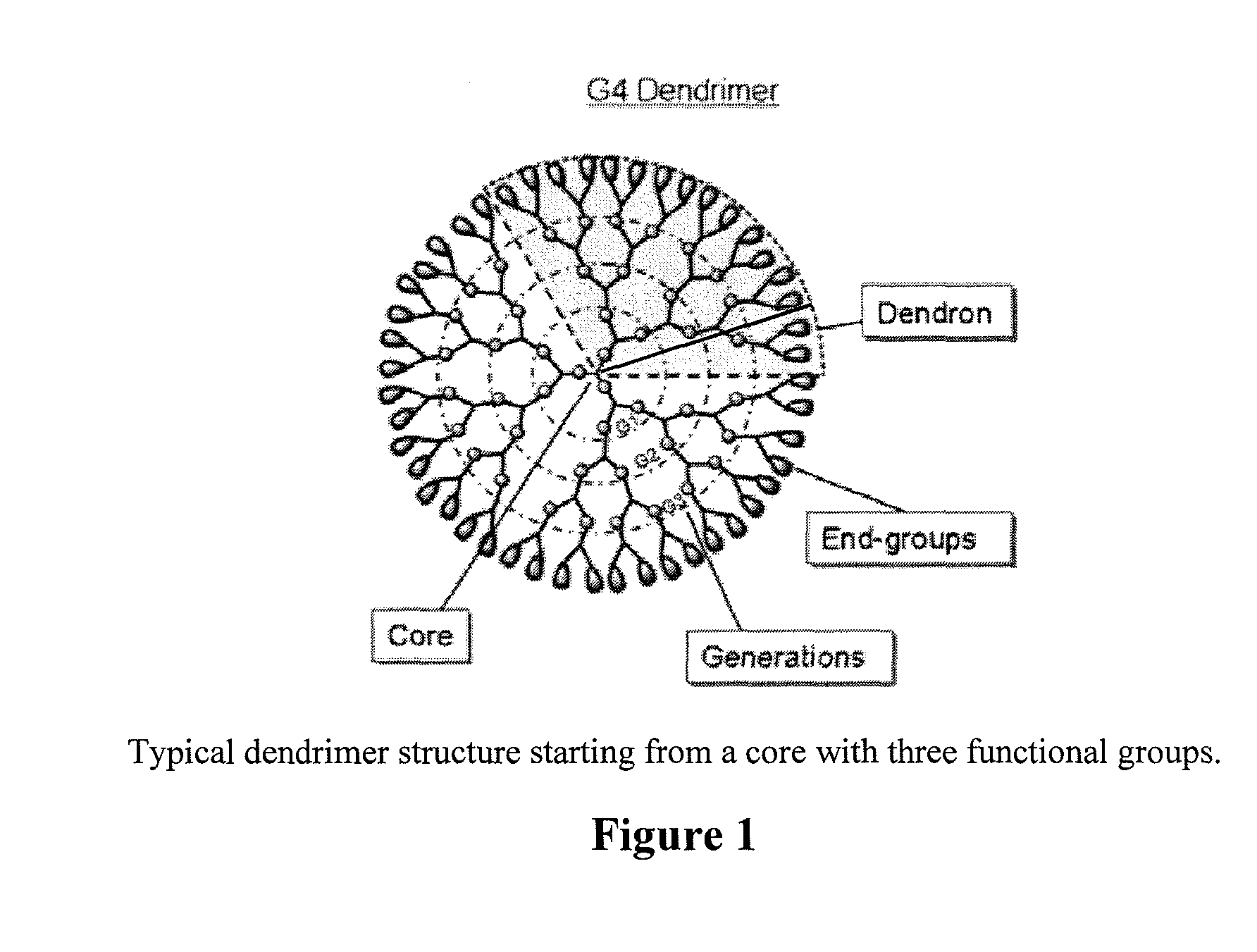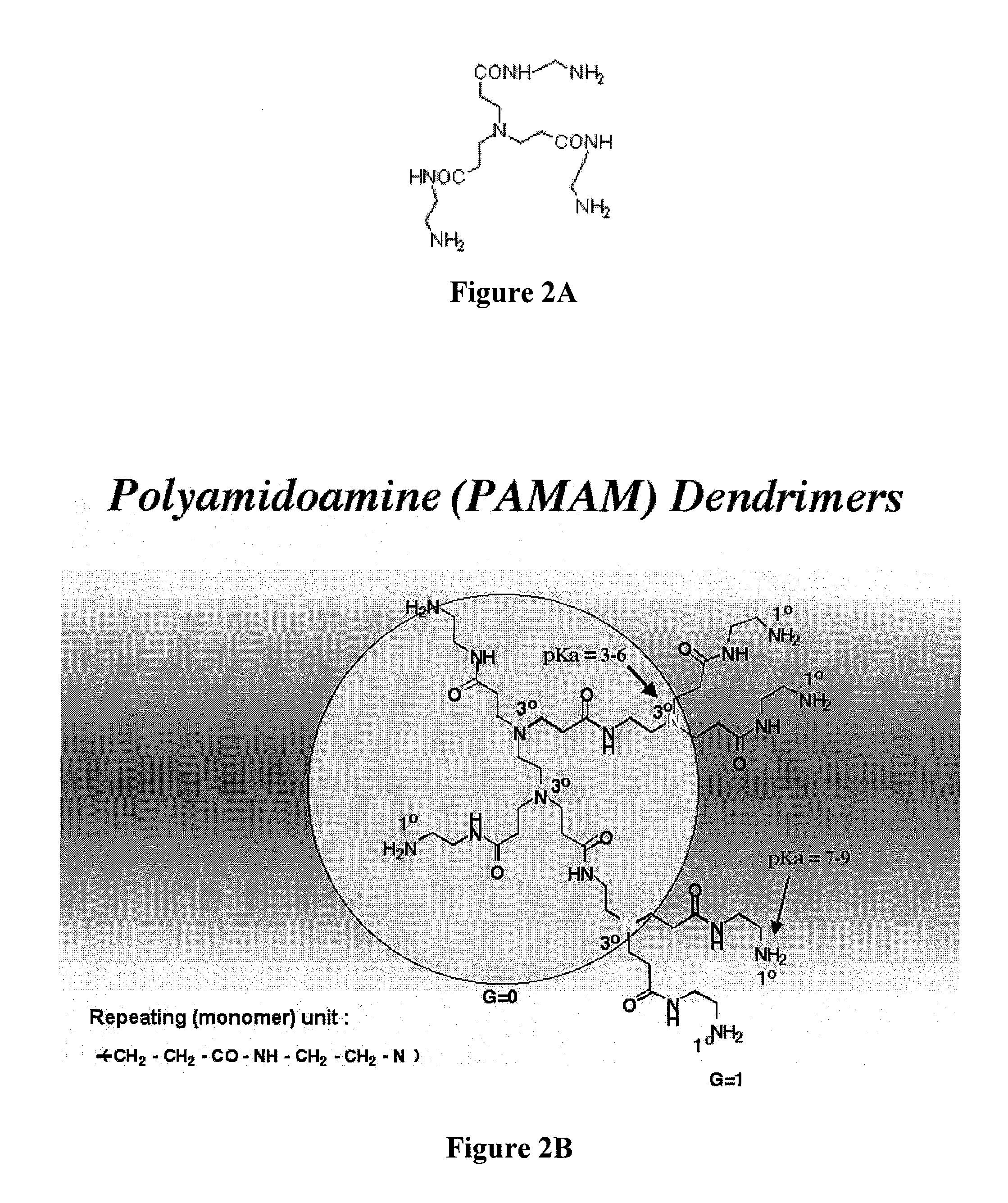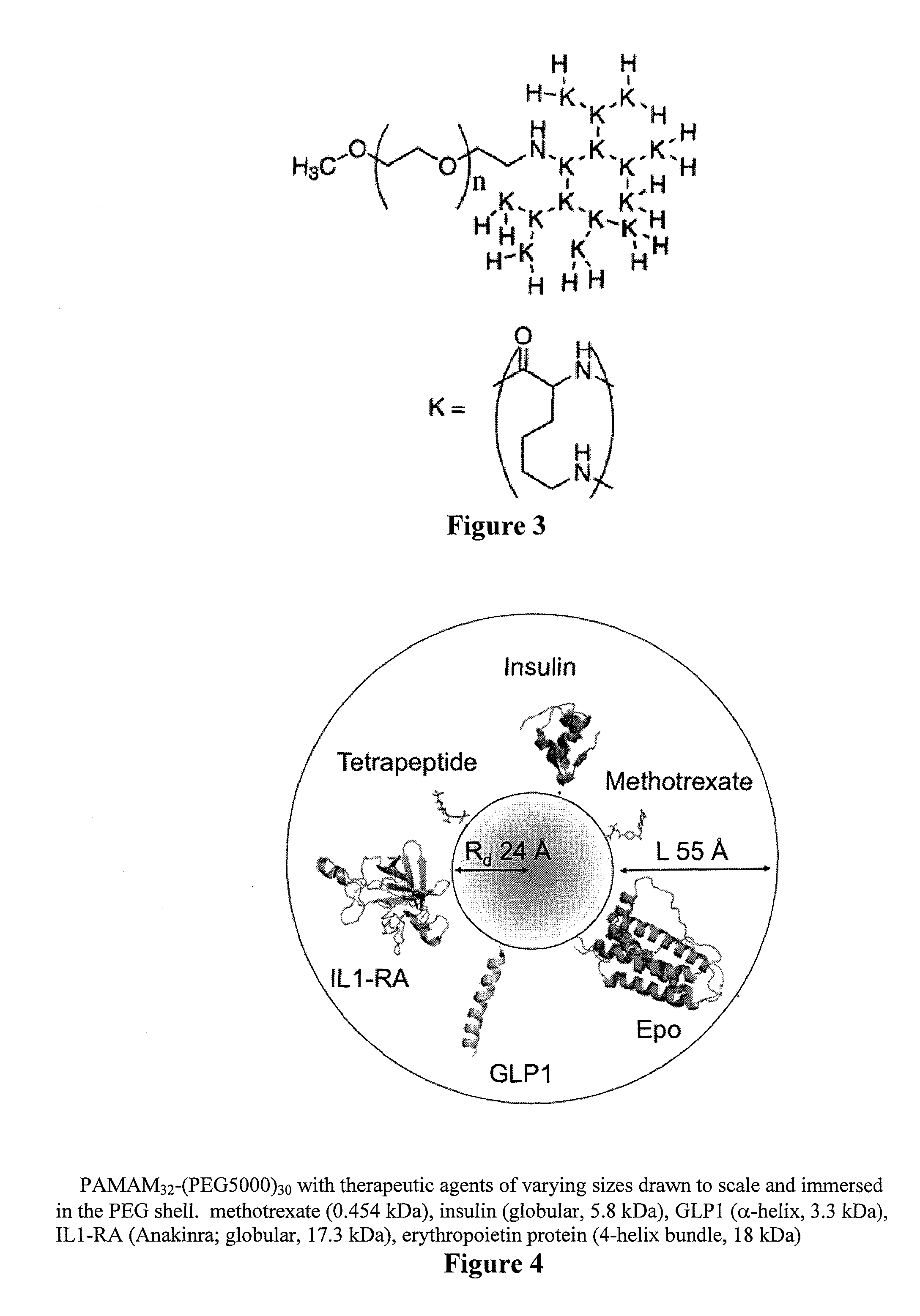Controlled drug release from dendrimers
- Summary
- Abstract
- Description
- Claims
- Application Information
AI Technical Summary
Benefits of technology
Problems solved by technology
Method used
Image
Examples
preparation 1
Release Rate Determination—Phenyl Sulfones
[0191]A series of model linker scaffolds having a range of functional groups as potential pKa modulators (substituted aromatics, ketones, nitriles, sulfones) were designed, prepared and linked via carbamate bonds to Ne-2,4-dinitrophenyl-L-lysine (Ne-DNP-Lys) for evaluation of release rates; DNP-Lys is water soluble and is a strong chromophore to permit HPLC-UV analysis. Rates of release at pH 7.4 and / or 8.3 were determined.
[0192]Starting alcohols, obtained commercially or prepared by standard methods, were converted into N-hydroxysuccinimide (HS) carbonates either using a one-step procedure with disuccinimidyl carbonate (Manoharan, J. Org. Chem. (1999) 64:6468-6472) or by a two-step procedure wherein the alcohol is first converted into the chloroformate using triphosgene / pyridine and then to the carbonate by treatment with N—HS (Tsubery, H., et al., J. Biol. Chem. (2004) 279:38118-38124).
[0193]The DNP carbamates were prepared as follows. A s...
preparation 2
Release Rate Determination—Effect of R5
[0197]From the studies in Preparation 1, the phenyl sulfone moieties at R1 appeared to provide rates (t1 / 2˜2 to 72 hr) spanning a range suitable for use in our conjugates. These were converted into bifunctional linkers containing a N—HS carbonate for attachment to amine-containing molecules and an acylated 3-aminophenyl moiety at R5 for attachment to PEG, or to dendrimers. In particular, linkers having the general structure shown below were prepared.
[0198]The N—HS carbonate linkers with Ry═—(CH2)3C≡CH were attached to Ne-DNP-Lys, and the rates of Lys(DNP) release were measured in 0.1 M HEPES, pH 7.40 at 25° C. or 37° C. using HPLC. All compounds gave good first-order kinetics, with t1 / 2 16 to 120 hours (Table 5) and a temperature coefficient Q12 of 5.7±0.1.
TABLE 5Rates of H-Lys(DNP)-OH release from compounds(Ry = —(CH2)3C≡CH)k, hr−1t1 / 2, hrNo.R125° C.37° C.25° C.37° C.14-Cl0.00740.043494162H0.0040.02361703032,4-Me20.00210.012*3305744-Me0.00180...
preparation 3
Effect of Coupling to a Macromolecule
[0200]The linker with Rx=4-methoxy, Ry═—(CH2)3C≡CH coupled to Ne-DNP-Lys was conjugated with 40 kDa PEG-azide using copper-catalyzed Huisgen cycloaddition. Examination of the release of H-Lys(DNP)—OH indicated that the rate of release from the macromolecular conjugate (k=0.0059 h−1, t1 / 2=118 hrs) was similar to that of the unconjugated linker (t1 / 2=94 hr).
[0201]Preliminary results of determination of effects of human sera on the rate of release from PEG-conjugates suggest there may be a uniform 3-fold rate enhancement of cleavage. The conjugate of 40 kDa PEG with this compound was administered to rats to determine pharmacokinetics; stably conjugated Lys(DNP) was also prepared by click chemistry between Na-hexynoyl-Lys(DNP)—OH and 40 kDa-PEG-azide and administered to rats as a control. Competitive ELISA for DNP-Lys using DNP—BSA and an anti-DNP antibody conjugated to alkaline phosphatase is employed.
[0202]Preparations 4-19 describe intermediates a...
PUM
| Property | Measurement | Unit |
|---|---|---|
| Temperature | aaaaa | aaaaa |
| Time | aaaaa | aaaaa |
| Time | aaaaa | aaaaa |
Abstract
Description
Claims
Application Information
 Login to View More
Login to View More - R&D
- Intellectual Property
- Life Sciences
- Materials
- Tech Scout
- Unparalleled Data Quality
- Higher Quality Content
- 60% Fewer Hallucinations
Browse by: Latest US Patents, China's latest patents, Technical Efficacy Thesaurus, Application Domain, Technology Topic, Popular Technical Reports.
© 2025 PatSnap. All rights reserved.Legal|Privacy policy|Modern Slavery Act Transparency Statement|Sitemap|About US| Contact US: help@patsnap.com



